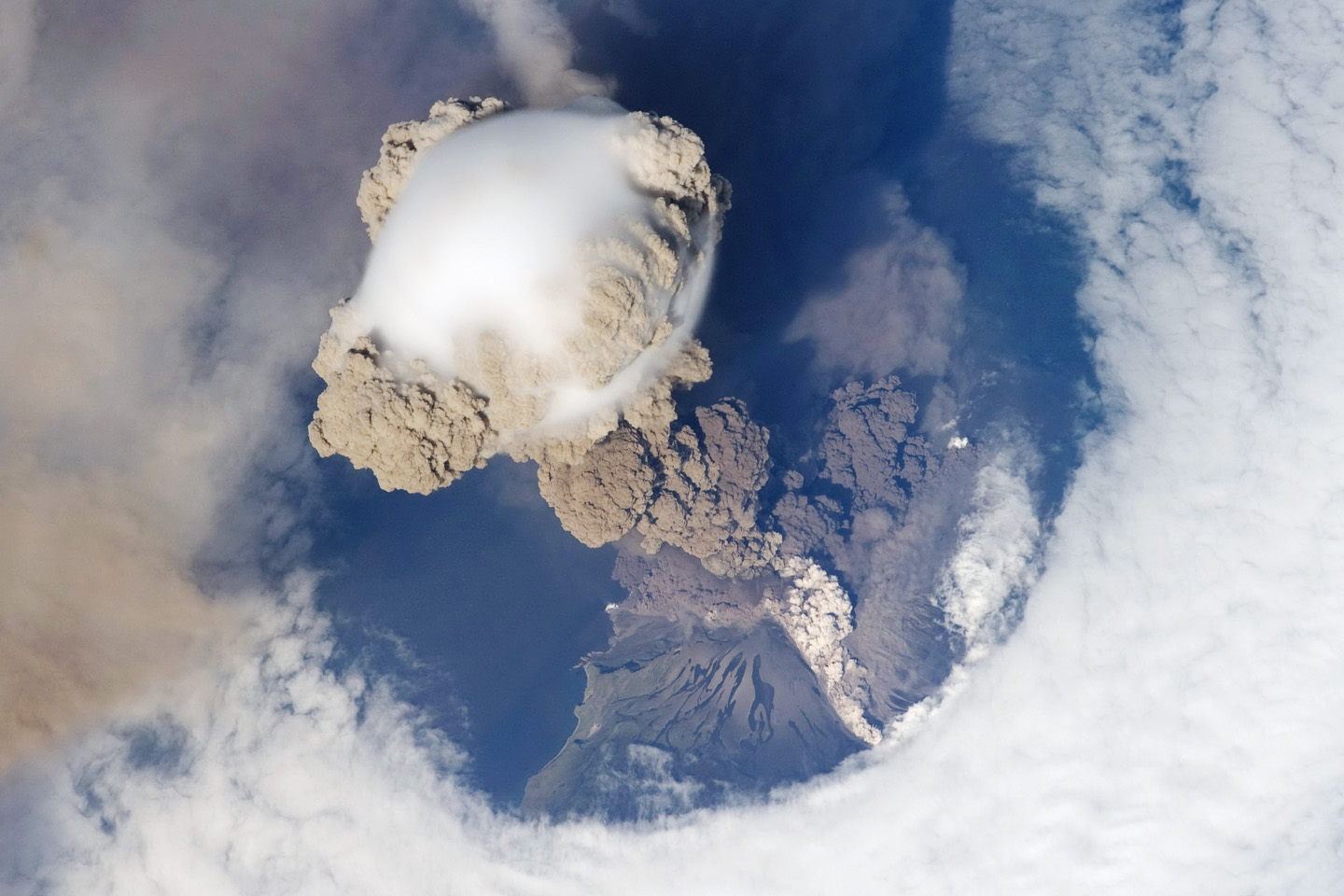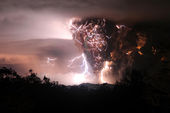
© NASA Earth ObservatorySarychev Peak Eruption, Kuril Islands
Thanks to
Spaceweather.com for coverage of this eruption.
Perfect timing. On June 12th, just as Russia's Sarychev Peak volcano was erupting for the first time in 20 years, the International Space Station flew directly overhead. Astronauts had their camera ready and snapped one of the most dramatic
Earth-science photos ever taken from space.
Researchers are studying this rare photo to learn about the early stages of powerful volcanic eruptions. A few phenomena stand out.
(1) The volcano erupted with such force, the plume actually punched through the atmosphere. Note how clouds around the volcano have parted in a circular ring--that is a result of a shock wave produced by the upward blast.
(2) The plume is a mixture of brown ash and white steam. A "dirty thunderstorm" complete with lightning could be in progress within the roiling cloud.
(3) The smooth white bubble on top of the plume is probably a mass of water condensing from air shoved upward by the rising ash column. If so, it is akin to the iridescent pileus clouds sometimes featured on spaceweather.com.

